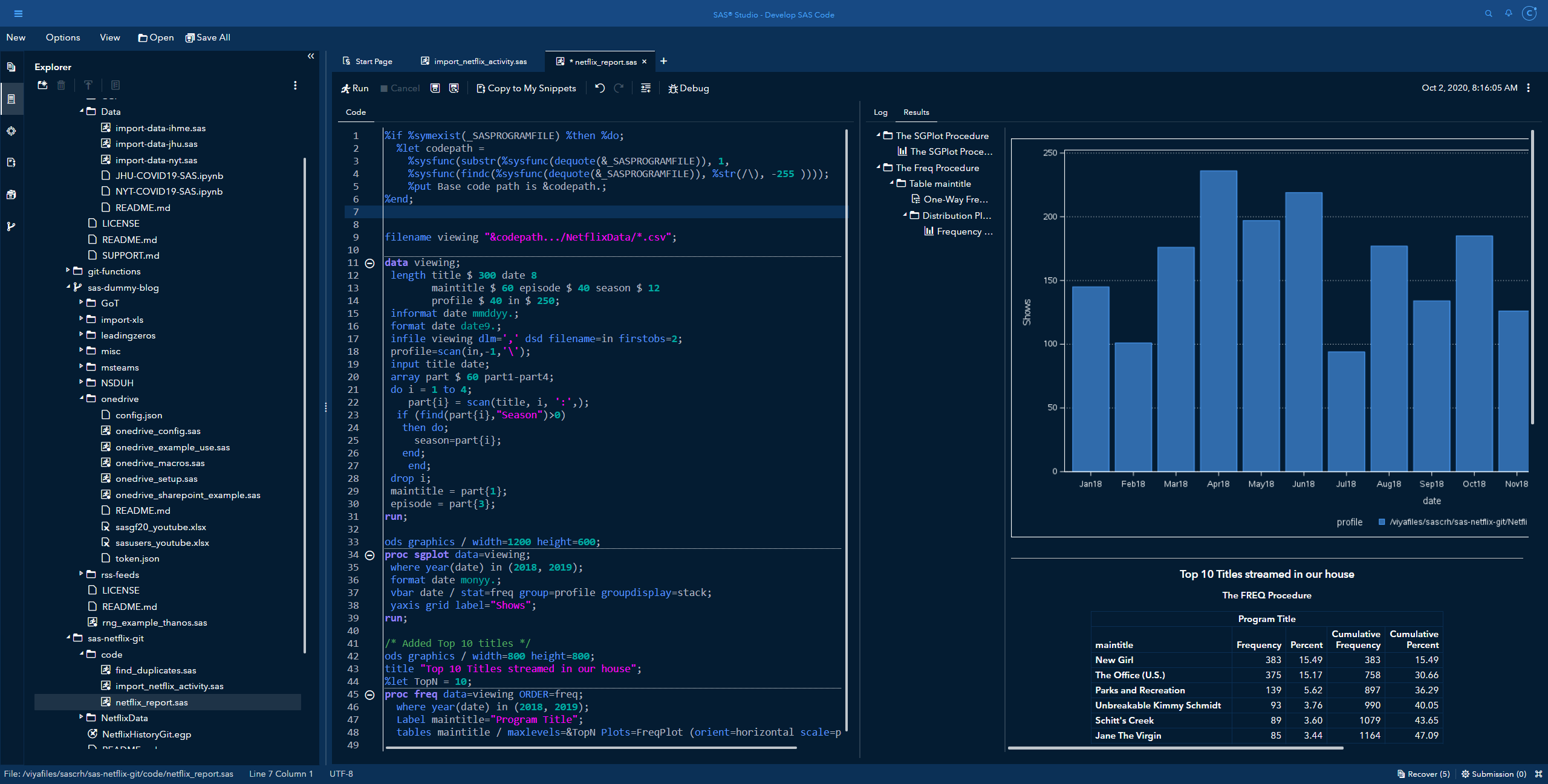
Once you are sure you’ve got it right, you can save the dataset back into your permanent library. Now you can try out some manipulations on your temporary dataset called test without altering your original dataset. The program above copies the dataset sample (which is located in the SAS library called practice) into a temporary dataset called test (which is located in the Work library). Copying a dataset into the Work library is easy: DATA test The Work library can also be helpful if you want to work on your stored dataset, but you are nervous about manipulating the original file – just copy the dataset into the Work library and you can manipulate it there. The Work library can be extremely useful when you want to manipulate a dataset with multiple data steps and you don’t necessarily want to save the datasets resulting from the interim steps. Is the same as a data step that starts with this line: DATA StatsRule īoth will create a dataset called StatsRule in the work library. Furthermore, you do not have to include it as the libref when you reference a dataset – a dataset named without a libref is assumed to be in the Work library.Ī data step that starts with this line: DATA work.StatsRule You do not have to declare the Work library with a LIBNAME statement because it is automatically created when you open SAS. Because the Work library is temporary, you will lose any datasets you created and stored in the Work library when you close out of your SAS session. The Work library is a place to store data you are working on in your current session. SAS has a built-in temporary library called Work. This just means that when you restart SAS, you will need reload the library again in order to access its contents. When you end your SAS session, any libraries that you’ve defined will be lost. For example, if we have a dataset named sample stored in the folder ‘C:\Users\Research\Thesis’, which we’ve told SAS is the location of our library called practice, then we refer to that dataset as practice.sample The second part of the name (after the period) is the dataset’s name. The first part of the name (before the period) is the dataset’s library assignment. Once a library has been assigned to a location with a SAS dataset, the dataset can be referred to in statements using two parts: libref.SAS-dataset-name You will get an error message if you try to refer to a dataset that has not yet been pointed to in a LIBNAME statement. Most SAS users put their LIBNAME statements at the beginning of the program, but you can put a LIBNAME statement anywhere in the program as long as it comes before you reference a file in that location. (This folder must already exist on your computer.) Here is an example LIBNAME statement that creates the library named practice and assigns it to a folder in the directory ‘C:\Users\Research\Thesis.’ LIBNAME practice 'C:\Users\Research\Thesis' Finally, the text in quotes is what path name you tell SAS to assign the library to. It must be eight or less characters and start with a letter. The second word ( libref) is what you name the library.

Here the first word ( LIBNAME) is the SAS keyword that tells it to create a library. The format of the LIBNAME statement is: LIBNAME libref 'Folder path name here'

A LIBNAME statement is one of those global statements that we mentioned in Section 1 that does not occur in a data step or a proc step. A library is assigned a location with a LIBNAME statement in SAS. One or many datasets can be assigned to the same library. Alternatively, you can create your own data in SAS, which is also covered below. If it is stored as a file other than SAS (Excel, SPSS, text, etc.) then you’ll need to help SAS read it with one of the methods described in the next sections of this tutorial. If the data you want to work with is already a SAS dataset stored somewhere on your computer, then all you need to do to start working with your data is assign a library name to the location of the dataset. SAS libraries allow users to safely store things like data sets and user-defined formats so that they can be accessed without having to reload or re-read them from an external file every time SAS is started. A SAS library is a folder located on a user's disk drive or on the internet that is specially designated for use by SAS.


 0 kommentar(er)
0 kommentar(er)
